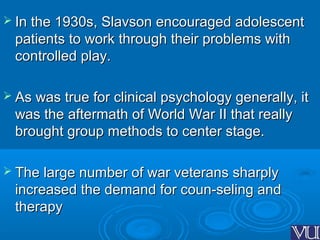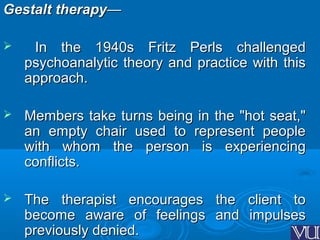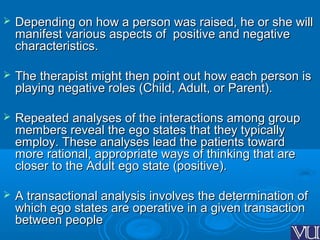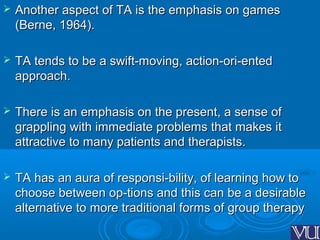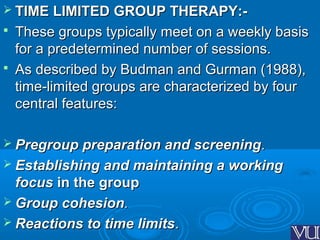Group therapy involves a small, carefully selected group of individuals meeting regularly with a therapist to assist with emotional growth and problem solving. There are various approaches to group therapy, including psychodynamic, phenomenological, gestalt, transactional analysis, and behavioral. Key components of group therapy include developing group cohesion, members helping and learning from one another, and curative factors such as universality, altruism, and interpersonal learning. The history and procedures of group therapy are outlined.









